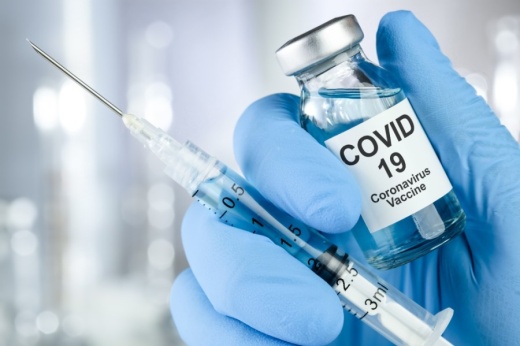The county plans to have five major drive-thru vaccination sites—one in the county’s east side, one in the west side and three along the I-45 corridor—that will each administer up to 1,000 doses per day, officials said at a Jan. 12 Commissioners Court meeting.
Now that the plan is in place, Montgomery County is poised for additional vaccine doses from the state, officials said. When that may be is up in the air, but officials said they anticipate the state’s supply to ramp up in the coming weeks and begin opening up to the public.
How Texas’ distribution works
Precinct 3 Commissioner James Noack said his phone has been ringing off the hook with constituents asking when they can get a vaccine and what the county is doing to provide vaccines.
But the state, not the county, is in charge of allocating vaccines to particular providers, said Chris Perkins, senior planner at the county’s office of homeland security and emergency management.
"We have very little to no input from the county level on how those allocations are made from the state vaccine advisory panel down to the individual providers that receive the vaccine,” Perkins told commissioners.
The state is prioritizing large hospital systems as well as large pharmacies, such as CVS and Walgreens, to administer to nursing homes and long-term care facilities, Perkins said. But now that the federal mandate to prioritize the latter two has ended, Perkins said the state will likely move towards a mass vaccination model.
“That carve-out mandated by the feds to go to long-term care facilities is not going to happen anymore, so there’s going to become more vaccine available for distribution around the state,” said Daren Hess, director of homeland security and emergency management.
The state has begun taking steps toward this with the designation of several regional "vaccine hubs" throughout the state earlier this week. Montgomery County was not one of the 18 counties to have a mega site designated.
“The states don’t have enough vaccines being shipped to them from the federal government. It’s just simply not as large a supply out there,” Perkins said.
However, he said that having a mass vaccination plan in place is critical for Montgomery County to prove to the state it has the capabilities to mass-distribute vaccines, he said.
According to Perkins, the county has received about 26,000 doses of Pfizer and Moderna and has less than 2,000 doses still on the shelves as of Jan. 10—a sign that providers are quickly getting vaccines out the door, as required by the state, he said. This differs significantly from state data, which shows the county has received 36,475 doses and vaccinated 9,849.
Perkins said there has been inconsistencies and discrepancies with the state data, adding he is unsure why. In a followup email, Meghan Arthur, public information officer for Montgomery County Office of Homeland Security and Emergency Management, said county officials are working with representatives from the Texas Department of State Health Services and Texas Division of Emergency Management to synchronize the data that is being reported on the state agency websites, and the state data is inaccurate.
However, Perkins said at the meeting that he is confident the data he provided to commissioners is the most accurate.
“The demand shows two things ... Montgomery county can handle vaccinations as they come in ... and two, it does show a desire from our citizens, our health care workers, our first responders to be vaccinated,” he said.
Montgomery County’s plan
Just a few weeks after the state began doling out doses, Montgomery County officials said they sprang into action to develop a plan to distribute vaccines across the county once mass supply becomes available.
“We have developed a mass vaccination concept of the operations of how we would execute it here in Montgomery County when we begin to get large doses or large stockpiles of vaccines that we can push out,” Perkins said.
Jason Millsaps, executive director of homeland security and emergency management, said he does not want to reveal the names or exact locations of the five providers yet, as they may become inundated with requests for vaccinations by residents before they are able to provide. However, once the providers are operating as vaccine hubs, they will have the capability to administer hundreds of vaccines per day at each location.
The providers will operate as drive-thrus, with paramedics on-site to observe for any immediate effects post vaccination. The locations will also have large tents.
Currently, the county is partnered with various providers, such as pharmacies and hospitals, that are distributing the doses. According to Millsaps, some of these partners have notified the state they are eligible of taking in and distributing more doses. The county is also equipped with the freezer space and supplies to handle the logistics, he said.
“Now we just need the vaccinations to start rolling in,” Millsaps said.
There will likely be a rush once that happens.
“We do anticipate that when we are able to open these mass vaccination sites, there’s going to be a wait; there’s going to be appointments lists; the demand for it is going to be great; and the providers are all aware of that,” Millsaps said. “They are asking the state for multiple thousands of doses at a time right now.”





